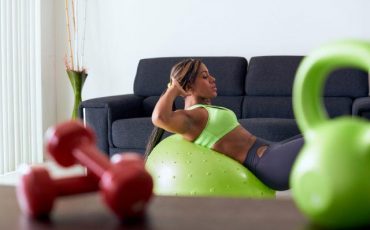Status represents an individual’s social standing in relation to others. Attributes of status can be based upon physical characteristics (e.g., age) or intangible attributes (e.g., prestige, prominence). Individuals with higher status are often afforded more social benefits including respect, more unsolicited help from others, greater praise for performance, disproportionate credit for successful collaborative efforts, and more opportunities to share their opinions. Higher status individuals perceive the world and themselves differently and more favorably than do those of lower status. Status is an important concept within group settings as perceptions of status influence thoughts, attitudes, and behaviors of individuals toward other group members. While status and its influence on group members has been a topic of considerable interest in the fields of social and organizational psychology, research on status is relatively recent in sport and exercise settings. In this entry, we investigate attributes of status and empirical evidence on the topic in sport and physical activity (PA) settings.
Attributes of Status in Sport
Shanthi Jacob and Albert Carron conducted a series of studies examining attributes of status in sport. In an initial review of literature in psychology, sociology, and sport sciences, they identified 17 attributes of status. The attributes were further classified into two categories: (1) achieved status attributes—attributes such as education or experience that are products of personal effort—and (2) ascribed status attributes—attributes such as race or parental education that are independent of personal effort. The most salient status attributes included competitive experience, performance, and team role (captain or cocaptain)—all of which are achieved status attributes.
In a follow-up study, Jacob and Carron examined the association between perceived status and cohesion in sport teams. The sample included intercollegiate Canadian and Indian athletes from a wide cross section of sports (e.g., volleyball, basketball, soccer, hockey), and they found that athletes who perceived greater task cohesion on their respective teams (i.e., higher personal involvement with group’s task, productivity, and goals) placed less importance on status within the team.
Recently, Jacob Johnson (née Jacob) undertook a qualitative approach to further understand attributes of status in sport teams. Her analysis revealed four main categories of status attributes: physical (e.g., performance, experience, appearance, role, and position), psychological (e.g., individual psychological attributes—positive attitude, group psychological attributes—team spirit), demographic (e.g., age, income, family status), and relationships with external others (e.g., family support). Psychological rather than physical or demographic attributes were deemed most important and most frequently reported by Canadian and Indian athletes.
Empirical Evidence on Status in Sport
Starting status, often dichotomized into starters (i.e., athletes who begin competition on the playing surface and typically receive regular playing time) versus nonstarters (i.e., athletes that do not begin competition on the playing surface and typically receive irregular playing time), has been a focus of sport psychology (SP) research. Starting (high-status) athletes hold greater perceptions of dedication, social cohesion (attractions toward team social activities), and satisfaction for ability utilization. In contrast, nonstarters have greater role ambiguity (i.e., lack of clarity in roles) and less role efficacy (i.e., belief in their capability to successfully perform role) than starters.
Status Inequality in Sport
Researchers in organizational psychology have highlighted the benefits of equal status within groups. Equal status teams make decisions on the basis of quality of information regardless of the contributor’s status and provide lower status individuals with greater opportunities to enhance their self-efficacy and performance. Amy Christie and Julian Barling examined how status inequality on sport teams is related to individual performance and physical health among 30 National Basketball Association (NBA) teams over six seasons. Status was operationalized through player salaries, number of games started, organizational tenure, player awards and recognitions, and star power. Physical health was evaluated based upon absenteeism. Key findings revealed that status inequality impeded performance across time for lower status players in particular. Mixed evidence was found for the status equality–physical health relationship.
The inconsistent findings were attributed by the researchers to the lower status players in both equal and unequal settings feeling pressured to play whether ill or injured due to job insecurity. This explanation is consistent with previous studies on work place sickness and absenteeism.
Status and Physical Activity Participation
Status research in physical activity (PA) has predominantly been descriptive and focused on sociodemographic factors such as age, sex, race, ethnicity, and socioeconomic status (SES). Other status classification categories include education, marital status, parental employment, family poverty, and self-reported health. Among sociodemographic factors, SES and PA have received considerable attention. Higher SES youth and adults consistently report higher PA compared to lower SES individuals. While much of the status research on PA and exercise has been descriptive and quantitative in nature, some limited work has qualitatively investigated the influence of status on PA behavior. Louise Humbert and colleagues asked high and low SES youth to share their perspectives on barriers to PA and how to get youth their age to be active. Findings indicated that environmental factors of proximity, cost, access to facilities, and safety were important participation factors for youth living in low SES areas. Intrapersonal factors (e.g., perceived skill and competence to be physical active) and social factors (e.g., friends, adult support) were identified as key intervention components to improve participation among both high and low SES youth.

Leave a Reply